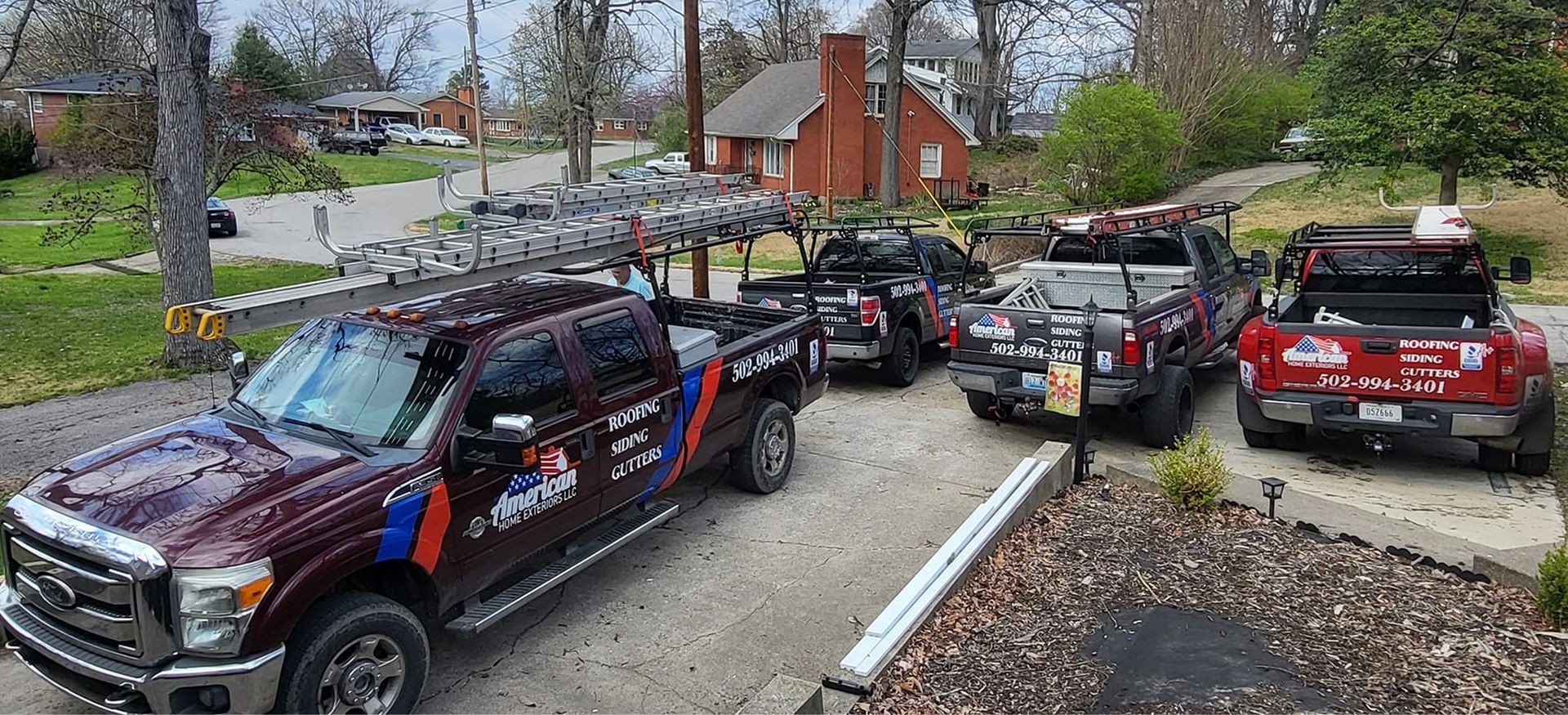Understanding Roof Insurance Claims: How to Avoid Common Mistakes
Filing a roof insurance claim can feel overwhelming—especially after a storm has already caused damage. Between navigating insurance paperwork, working with adjusters, and scheduling repairs, it’s easy for homeowners to make costly mistakes that delay coverage or reduce their payout.
With the right knowledge and preparation, however, you can make the process much smoother. In this post, we’ll share practical roof insurance claim tips to help Louisville homeowners avoid common pitfalls and get their roofs repaired or replaced quickly and correctly.
Why Roof Insurance Claims Can Be Complicated
Louisville experiences its fair share of severe weather throughout the year—from spring hailstorms and heavy summer winds to occasional winter ice damage. These conditions often lead to roof wind damage or leaks that require professional repair or full replacement.
While insurance is designed to cover these events, homeowners often run into issues such as:
- Incomplete or delayed damage documentation
- Miscommunication with adjusters
- Choosing inexperienced or out-of-town contractors
- Missing policy deadlines
- Failing to understand coverage limitations
A clear understanding of the roofing contractor insurance process can help you avoid these headaches and make sure your claim is handled properly.
Step 1: Start with a Professional Roof Inspection
Before you file a claim, it’s crucial to have your roof inspected by a trusted local roofing contractor. Insurance adjusters may not catch every issue, especially if damage isn’t immediately visible from the ground. A professional inspection ensures you have a full picture of what happened.
Why this matters:
- Helps you identify all storm-related damage, including hidden leaks or compromised shingles
- Provides a detailed report and photos to support your claim
- Ensures the claim reflects the true scope of repair or replacement needed
For example, roof wind damage may cause shingles to lift or crack in ways that aren’t obvious at first glance. A qualified inspector will know what to look for and how to document it properly.
Step 2: Review Your Insurance Policy
Before contacting your insurance company, take time to review your homeowner’s policy. Look for sections that outline:
- Covered perils: Which weather events are included (e.g., wind, hail, ice, storms)
- Deductibles: What you’re responsible for paying out of pocket
- Exclusions: Certain cosmetic damage or pre-existing issues may not be covered
- Filing deadlines: Most policies have strict timelines for submitting claims after a storm
Understanding your coverage in advance puts you in a stronger position when you begin the roofing contractor insurance process and talk to your adjuster.
Step 3: File Your Claim Promptly
Insurance companies typically require claims to be filed within a set number of days after damage occurs. In Kentucky, severe weather can trigger multiple claims simultaneously, leading to potential delays if you wait too long.
Filing promptly helps you:
- Get an adjuster visit scheduled sooner
- Lock in your claim within the required window
- Prevent further damage from worsening before repairs
When filing, include as much documentation as possible—photos, inspection reports, and notes about when the storm occurred. These details make the process smoother and help establish that the damage is tied to a specific event.
Step 4: Meet the Adjuster with Your Contractor
One of the best roof insurance claim tips is to have your roofing contractor present when the insurance adjuster visits. This ensures that all damage is accurately noted and that nothing is overlooked.
Benefits of this approach:
- Your contractor can point out less visible damage, like lifted shingles or compromised flashing
- They can explain necessary roof repairs in technical terms
- It reduces the risk of miscommunication between you, the adjuster, and the insurance company
Homeowners who try to navigate the adjuster visit alone often miss opportunities to get legitimate storm repair coverage for their roof.

Step 5: Get Multiple Estimates—but Be Strategic
While you want to ensure fair pricing, the lowest bid isn’t always the best. Some storm-chasing contractors offer cheap estimates, only to cut corners or disappear after the job is done. When comparing estimates, look for:
- Local reputation: Choose a well-established Louisville roofing company
- Detailed breakdowns, including materials, labor, timeline, and warranties, should be clearly outlined.
- Experience with insurance: Contractors who understand the roofing contractor insurance process can handle paperwork efficiently
A solid, realistic estimate strengthens your claim and helps you get the coverage you’re entitled to.
Step 6: Don’t Delay Temporary Repairs
If your roof is leaking or structurally compromised, make temporary repairs immediately to prevent further damage. Most insurance policies require homeowners to mitigate additional losses after the initial storm. Examples of temporary repairs include:
- Tarping exposed areas
- Securing loose shingles
- Clearing debris from gutters and roof valleys
Document these temporary fixes with photos and receipts—they may be reimbursable under your policy. Quick action shows your insurance company that you’ve taken steps to limit damage.
Step 7: Watch Out for Common Mistakes
Even well-intentioned homeowners can make missteps during the claims process. Avoid these common errors:
- Waiting too long to file a claim can lead to denial due to missed deadlines.
- Failing to document damage: Adjusters rely heavily on evidence. Without it, coverage can be reduced.
- Accepting a low initial settlement: Don’t be afraid to ask for clarification or supplemental claims if the payout doesn’t cover necessary work.
- Hiring storm-chasers: Non-local contractors may not be around to honor warranties or fix issues later.
Following these roof insurance claim tips will help ensure your claim goes smoothly and that you receive the proper storm repair coverage for your situation.
Step 8: Know When to Appeal or Seek a Second Opinion
If your insurance company denies your claim or offers less than expected, don’t assume the decision is final. You have the right to:
- Request a reinspection: Especially if new damage is discovered or the adjuster missed something.
- Submit supplemental documentation: Contractor reports, photos, or additional estimates can strengthen your case.
- Work with your roofing contractor: Experienced contractors can help you navigate appeals and clarify technical issues for adjusters.
Being persistent and organized can make a significant difference in the outcome of your claim.
Step 9: Schedule Repairs Quickly
Once your claim is approved, schedule the repair or replacement work as soon as possible. Louisville’s busy storm seasons can lead to contractor backlogs, so locking in a timeline early ensures your roof is protected before the next storm.
Delaying repairs can lead to more leaks, interior damage, or even additional claim complications if another storm hits before work begins.
Navigate Roof Insurance Claims with Confidence
Filing a roof insurance claim doesn’t have to be stressful. By following these roof insurance claim tips, Louisville homeowners can navigate the process confidently and avoid common mistakes that lead to delays or reduced coverage. From identifying roof wind damage to understanding your policy, working with a trusted local contractor, and managing the roofing contractor insurance process, every step plays a role in protecting your home and getting the coverage you deserve.
American Home Exteriors has years of experience helping Louisville homeowners navigate roof insurance claims with honesty, clarity, and expert workmanship. Whether you need storm damage inspection, claim assistance, or full roof replacement, our team is here to guide you through every step.
Contact us today to schedule your storm damage inspection and get expert support for your insurance claim.



